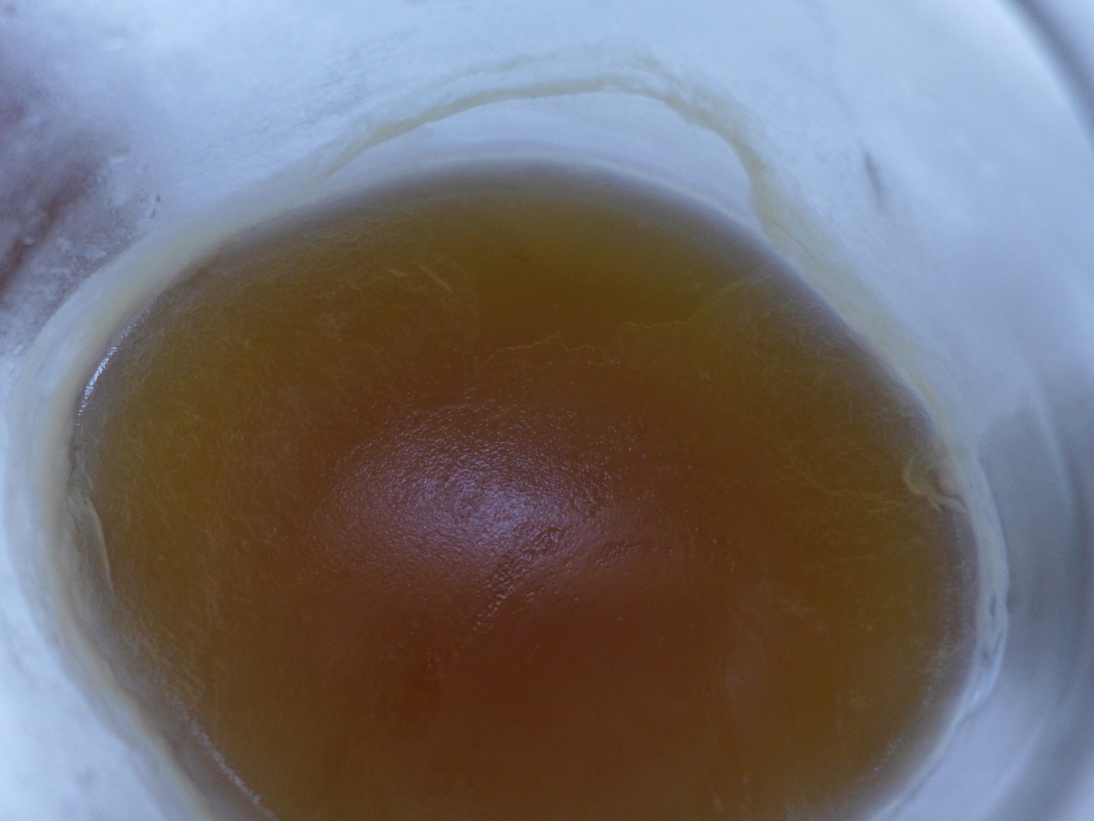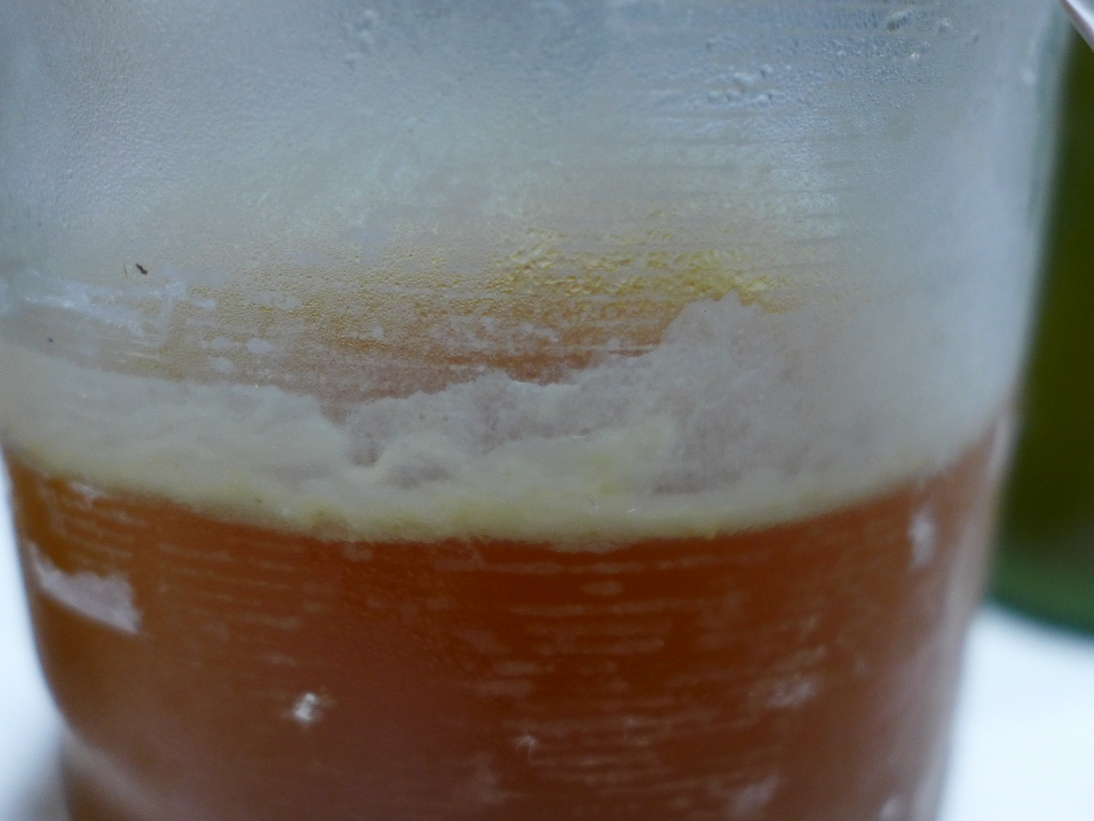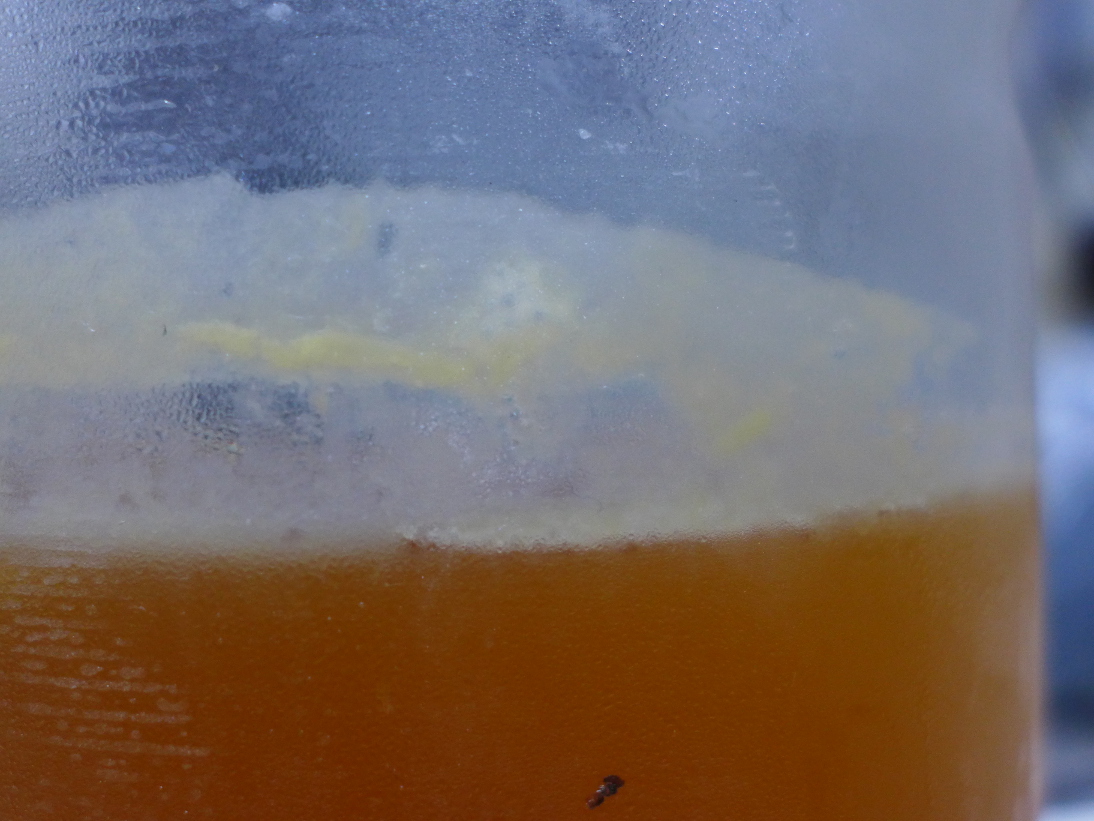A wise man, having three bottles of the same beer from which he wishes to harvest yeast, leaves at least one bottle in reserve in case his first attempts fail. He protects the yeast militantly from potential infection. He follows standard protocol and sound advice from those who have come before him.
I'm not a very wise man. I've also never bottle-harvested yeast, so I could be misreading totally normal signs in classic new homebrewer fashion.
I took three bottles of Saison Dupont about a week ago. Sanitized the outsides of the bottles, prepared 300mL of 1.020 starter wort, poured the chilled beer, being careful to leave the dregs, then poured 100mL of starter wort into each, covered fairly tightly with sanitized aluminum foil, and left them in a room-temperature place for a couple days, swirling gently when I had the chance.
I knew not to expect too much activity the first time around, so I made another 600mL of 1.020 starter wort (I know this is too much), and added each bottle's contents to three well-sanitized pickle jars with 200mL of the wort in each, covered again with sanitized foil folded tightly over the lip of the jars. Again, I swirled the jars when I had the chance. I let this go for four or five days, since I figured I had given more than enough sugar for the yeast to munch so early in the process.
I cold-crashed each of the jars in the fridge yesterday after looking at them and seeing that things look and smell a bit unsettling. We've got some big white lilies in the house right now that have been in the vase a couple days too long and the musky, perfumey smell is starting to turn - the starters smell like that, but a bit more stale. Two of the starters have some thin film on top and a bit growing up the sides, and the third has transparent, gelatinous things floating beneath the surface. All three also clearly have some yeast flocculated out at the bottom - The first two have caked pretty well, while the third seems to have little yeast rafts down near the bottom.
The first two pictures are Jar A, the next two are Jar B, the last two are Jar C. Getting another bottle of Saison Dupont is likely not an option before I want to use this yeast, but I can fall back on Belle Saison if this stuff is too sketchy.
Thoughts?






I'm not a very wise man. I've also never bottle-harvested yeast, so I could be misreading totally normal signs in classic new homebrewer fashion.
I took three bottles of Saison Dupont about a week ago. Sanitized the outsides of the bottles, prepared 300mL of 1.020 starter wort, poured the chilled beer, being careful to leave the dregs, then poured 100mL of starter wort into each, covered fairly tightly with sanitized aluminum foil, and left them in a room-temperature place for a couple days, swirling gently when I had the chance.
I knew not to expect too much activity the first time around, so I made another 600mL of 1.020 starter wort (I know this is too much), and added each bottle's contents to three well-sanitized pickle jars with 200mL of the wort in each, covered again with sanitized foil folded tightly over the lip of the jars. Again, I swirled the jars when I had the chance. I let this go for four or five days, since I figured I had given more than enough sugar for the yeast to munch so early in the process.
I cold-crashed each of the jars in the fridge yesterday after looking at them and seeing that things look and smell a bit unsettling. We've got some big white lilies in the house right now that have been in the vase a couple days too long and the musky, perfumey smell is starting to turn - the starters smell like that, but a bit more stale. Two of the starters have some thin film on top and a bit growing up the sides, and the third has transparent, gelatinous things floating beneath the surface. All three also clearly have some yeast flocculated out at the bottom - The first two have caked pretty well, while the third seems to have little yeast rafts down near the bottom.
The first two pictures are Jar A, the next two are Jar B, the last two are Jar C. Getting another bottle of Saison Dupont is likely not an option before I want to use this yeast, but I can fall back on Belle Saison if this stuff is too sketchy.
Thoughts?








